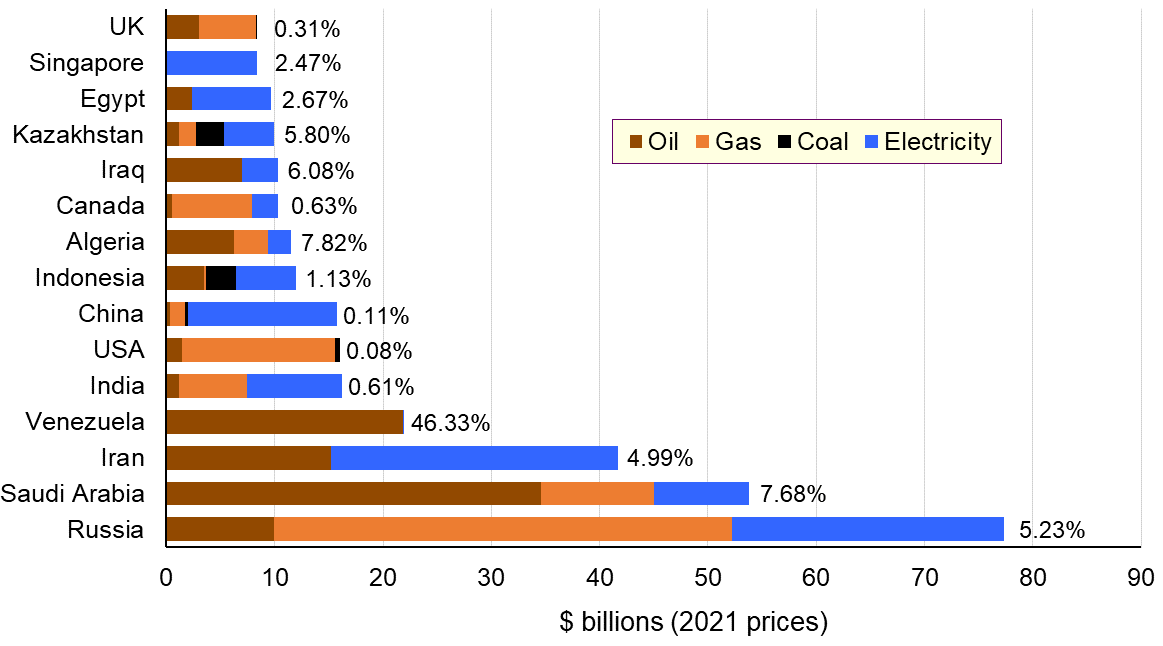 If it costs to dispose of waste, there is the danger that people may resort to fly-tipping – the illegal dumping of waste in the countryside or on the streets. But several local authorities have indeed been charging for the disposal of building/DIY waste, with the inevitable consequences of huge quantities of dumped rubbish.
If it costs to dispose of waste, there is the danger that people may resort to fly-tipping – the illegal dumping of waste in the countryside or on the streets. But several local authorities have indeed been charging for the disposal of building/DIY waste, with the inevitable consequences of huge quantities of dumped rubbish.
Apart from being an eyesore and damaging the environment, fly-tipped waste can be a health hazard, often containing toxic materials, such as asbestos and chemicals. According to the UK government, in 2020/21 there were over 60 000 incidents of fly-tipping of construction, demolition and excavation material, costing an estimated £392 million. In addition, people leave black bags of household waste and single items, such as mattresses, on the roadside.
The external costs are considerably greater than the benefits to those doing the dumping, but because the costs are largely external, people are encouraged to fly-tip, especially if they think that they are unlikely to be caught. Many householders are happy to pay low rates to have their DIY waste disposed of and ‘ask no questions’ about what will happen to it.
 It is clearly socially efficient to stop fly-tipping. One solution is to enforce the law more rigorously and to introduce stiffer penalties. Increasingly, local authorities and private landowners are installing CCTV cameras to identify people doing the tipping. To be effective, the cameras must be out of reach. Also, the police must then follow up any cases and arrest and charge the culprits.
It is clearly socially efficient to stop fly-tipping. One solution is to enforce the law more rigorously and to introduce stiffer penalties. Increasingly, local authorities and private landowners are installing CCTV cameras to identify people doing the tipping. To be effective, the cameras must be out of reach. Also, the police must then follow up any cases and arrest and charge the culprits.
An alternative is to provide free disposal at council tips. The UK government has launched a consultation on a proposal to prevent local authorities from charging for the disposal of DIY waste. This still involves an externality in that the costs of disposal are not being borne by the person creating the waste, but clearly the size of the negative externality is considerably less than if the waste had been fly-tipped.
Selected local authorities can apply for new grants totalling £450 000 to help fund the provision of free DIY waste disposal and to install systems, such as CCTV and automatic number-plate recognition, to catch fly-tippers in action.
Devising policies to reduce externalities often involves understanding the incentive mechanisms which encourage people to engage in such activities in the first place and then making it in people’s interests not to engage in them in the future.
Videos
Articles
Government publications
Questions
- Draw a diagram to illustrate how the consumption of products with large negative externalities is considerably above the socially efficient level.
- Compare the relative advantages and disadvantages of the various policy alternatives to tackle fly-tipping that are discussed in the articles.
- Are there any ‘nudges’ that could be used to prevent fly-tipping?

The Climate Change Pact agreed by leaders at the end of COP26 in Glasgow went further than many pessimists had forecast, but not far enough to meet the goal of keeping global warming to 1.5°C above pre-industrial levels. The Pact states that:
limiting global warming to 1.5°C requires rapid, deep and sustained reductions in global greenhouse gas emissions, including reducing global carbon dioxide emissions by 45 per cent by 2030 relative to the 2010 level and to net zero around mid-century, as well as deep reductions in other greenhouse gases.
So how far would the commitments made in Glasgow restrict global warming and what actions need to be put in place to meet these commitments?
Short-term commitments and long-term goals
According to Climate Action Tracker, the short-term commitments to action that countries set out would cause global warming of 2.4°C by the end of the century, the effects of which would be calamitous in terms of rising sea levels and extreme weather.
However, long-term commitments to goals, as opposed to specific actions, if turned into specific actions to meet the goals would restrict warming to around 1.8°C by the end of the century. These long-term goals include reaching net zero emissions by certain dates. For the majority of the 136 countries agreeing to reach net zero, the date they set was 2050, but for some developing countries, it was later. China, Brazil, Indonesia, Russia, Nigeria, Sri Lanka and Saudi Arabia, for example, set a date of 2060 and India of 2070. Some countries set an earlier target and others, such as Benin, Bhutan, Cambodia, Guyana, Liberia and Madagascar, claimed they had already reached zero net emissions.
Despite these target dates, Climate Action Tracker argues that only 6 per cent of countries pledging net zero have robust policies in place to meet the targets. The problem is that actions are required by firms and individuals. They must cut their direct emissions and reduce the consumption of products whose production involved emissions.
 Governments can incentivise individuals and firms through emissions and product taxes, through carbon pricing, through cap-and-trade schemes, through subsidies on green investment, production and consumption, through legal limits on emissions, through trying to change behaviour by education campaigns, and so on. In each case, the extent to which individuals and firms will respond is hard to predict. People may want to reduce global warming and yet be reluctant to change their own behaviour, seeing themselves as too insignificant to make any difference and blaming big business, governments or rich individuals. It is important, therefore, for governments to get incentive mechanisms right to achieve the stated targets.
Governments can incentivise individuals and firms through emissions and product taxes, through carbon pricing, through cap-and-trade schemes, through subsidies on green investment, production and consumption, through legal limits on emissions, through trying to change behaviour by education campaigns, and so on. In each case, the extent to which individuals and firms will respond is hard to predict. People may want to reduce global warming and yet be reluctant to change their own behaviour, seeing themselves as too insignificant to make any difference and blaming big business, governments or rich individuals. It is important, therefore, for governments to get incentive mechanisms right to achieve the stated targets.
Let us turn to some specific targets specified in the Climate Change Pact.
Phasing out fossil fuel subsidies
Paragraph 20 of the Climate Change Pact
Calls upon Parties to accelerate … efforts towards the … phase-out of inefficient fossil fuel subsidies, while providing targeted support to the poorest and most vulnerable in line with national circumstances and recognizing the need for support towards a just transition.
Production subsidies include tax breaks or direct payments that reduce the cost of producing coal, oil or gas. Consumption subsidies cut fuel prices for the end user, such as by fixing the price at the petrol pump below the market rate. They are often justified as a way of making energy cheaper for poorer people. In fact, they provide a bigger benefit to wealthier people, who are larger users of energy. A more efficient way of helping the poor would be through benefits or general tax relief. Removing consumption subsidies in 32 countries alone would, according to International Institute for Sustainable Development, cut greenhouse gas emission by an average of 6 per cent by 2025.
 The chart shows the 15 countries providing the largest amount of support to fossil fuel industries in 2020 (in 2021 prices). The bars are in billions of dollars and the percentage of GDP is also given for each country. Subsidies include both production and consumption subsidies. (Click here for a PowerPoint of the chart.) In addition to the direct subsidies shown in the chart, there are the indirect costs of subsidies, including pollution, environmental destruction and the impact on the climate. According to the IMF, these amounted to $5.4 trillion in 2020.
The chart shows the 15 countries providing the largest amount of support to fossil fuel industries in 2020 (in 2021 prices). The bars are in billions of dollars and the percentage of GDP is also given for each country. Subsidies include both production and consumption subsidies. (Click here for a PowerPoint of the chart.) In addition to the direct subsidies shown in the chart, there are the indirect costs of subsidies, including pollution, environmental destruction and the impact on the climate. According to the IMF, these amounted to $5.4 trillion in 2020.
But getting countries to agree on a path to cutting subsidies, when conditions vary enormously from one country to another, proved very difficult.
 The first draft of the conference agreement called for countries to ‘to accelerate the phasing-out of coal and subsidies for fossil fuels’. But, after objections from major coal producing countries, such as China, India and Australia, this was weakened to calling on countries to accelerate the shift to clean energy systems ‘by scaling up the deployment of clean power generation and energy efficiency measures, including accelerating efforts towards the phasedown of unabated coal power and phase-out of inefficient fossil fuel subsidies’. (‘Unabated’ coal power refers to power generation with no carbon capture.) Changing ‘phasing-out’ to ‘the phasedown’ caused consternation among many delegates who saw this as a substantial weakening of the drive to end the use of coal.
The first draft of the conference agreement called for countries to ‘to accelerate the phasing-out of coal and subsidies for fossil fuels’. But, after objections from major coal producing countries, such as China, India and Australia, this was weakened to calling on countries to accelerate the shift to clean energy systems ‘by scaling up the deployment of clean power generation and energy efficiency measures, including accelerating efforts towards the phasedown of unabated coal power and phase-out of inefficient fossil fuel subsidies’. (‘Unabated’ coal power refers to power generation with no carbon capture.) Changing ‘phasing-out’ to ‘the phasedown’ caused consternation among many delegates who saw this as a substantial weakening of the drive to end the use of coal.
Another problem is in defining ‘inefficient’ subsidies. Countries are likely to define them in a way that suits them.
The key question was the extent to which countries would actually adopt such measures and what the details would be. Would they be strong enough? This remained to be seen.
As an article in the journal, Nature, points out:
There are three main barriers to removing production subsidies … First, fossil-fuel companies are powerful political groups. Second, there are legitimate concerns about job losses in communities that have few alternative employment options. And third, people often worry that rising energy prices might depress economic growth or trigger inflation.
The other question with the phasing out of subsidies is how and how much would there be ‘targeted support to the poorest and most vulnerable in line with national circumstances’.
Financial support for developing countries
 Transitioning to a low-carbon economy and investing in measures to protect people from rising sea levels, floods, droughts, fires, etc. costs money. With many developing countries facing serious financial problems, especially in the light of measures to support their economies and healthcare systems to mitigate the effects of COVID-19, support is needed from the developed world.
Transitioning to a low-carbon economy and investing in measures to protect people from rising sea levels, floods, droughts, fires, etc. costs money. With many developing countries facing serious financial problems, especially in the light of measures to support their economies and healthcare systems to mitigate the effects of COVID-19, support is needed from the developed world.
In the COP21 Paris Agreement in 2015, developed countries pledged $100 billion by 2020 to support mitigation of and adaptation to the effects of climate change by developing countries. But the target was not reached. The COP26 Pact urged ‘developed country Parties to fully deliver on the $100 billion goal urgently and through to 2025’. It also emphasised the importance of transparency in the implementation of their pledges. The proposal was also discussed to set up a trillion dollar per year fund from 2025, but no agreement was reached.
It remains to be seen just how much support will be given.
Then there was the question of compensating developing countries for the loss and damage which has already resulted from climate change. Large historical polluters, such as the USA, the UK and various EU countries, were unwilling to agree to a compensation mechanism, fearing that any recognition of culpability could make them open to lawsuits and demands for financial compensation.
Other decisions
- More than 100 countries at the meeting agreed to cut global methane emissions by at least 30 per cent from 2020 levels by 2030. Methane is a more powerful but shorter-living greenhouse gas than carbon. It is responsible for about a third of all human-generated global warming. China, India and Russia, however, did not sign up.
 Again, more than 100 countries agreed to stop deforestation by 2030. These countries include Indonesia and Brazil, which has been heavily criticised for allowing large parts of the Amazon rainforest to be cleared for farming, such that the Amazon region in recent years has been a net emitter of carbon from the felling and burning of trees. The pledge has been met with considerable cynicism, however, as it unclear how it will be policed. Much of the deforestation around the world is already illegal but goes ahead anyway.
Again, more than 100 countries agreed to stop deforestation by 2030. These countries include Indonesia and Brazil, which has been heavily criticised for allowing large parts of the Amazon rainforest to be cleared for farming, such that the Amazon region in recent years has been a net emitter of carbon from the felling and burning of trees. The pledge has been met with considerable cynicism, however, as it unclear how it will be policed. Much of the deforestation around the world is already illegal but goes ahead anyway.- A mechanism for trading carbon credits was agreed. This allows countries which plant forests or build wind farms to earn credits. However, it may simply provide a mechanism for rich countries and businesses to keep emitting as usual by buying credits.
- Forty-five countries pledged to invest in green agricultural practices to make farming more sustainable.
- Twenty-two countries signed a declaration to create zero-emission maritime shipping routes.
- The USA and China signed a joint declaration promising to boost co-operation over the next decade on various climate actions, including reducing methane emissions, tackling deforestation and regulating decarbonisation.
 Blah, blah, blah or real action?
Blah, blah, blah or real action?
Many of the decisions merely represent targets. What is essential is for countries clearly to spell out the mechanisms they will use for achieving them. So far there is too little detail. It was agreed, therefore, to reconvene in a year’s time at COP27 in Egypt. Countries will be expected to spell out in detail what actions they are taking to meet their emissions targets and other targets such as ending deforestation and reducing coal-fired generation.
Articles
- COP26 ended with the Glasgow Climate Pact. Here’s where it succeeded and failed
CNN, Angela Dewan and Amy Cassidy (14/11/21)
- Good COP, Bad COP: Separating heat from light at the climate summit
Ing, Samuel Abettan, Gerben Hieminga and Coco Zhang (15/11/21)
- COP26: What was agreed at the Glasgow climate conference?
BBC News (15/11/21)
- Five Things You Need to Know About The New Glasgow Climate Pact
The Conversation, Simon Lewis and Mark Maslin (13/11/21)
- Infographic: What has your country pledged at COP26?
Aljazeera, Hanna Duggal (14/11/21)
- Cop26: world on track for disastrous heating of more than 2.4C, says key report
The Guardian, Fiona Harvey (9/11/21)
- Cop26 took us one step closer to combating the climate crisis
The Guardian, Christiana Figueres (15/11/21)
- After the failure of Cop26, there’s only one last hope for our survival
The Guardian, George Monbiot (14/11/21)
- Why fossil fuel subsidies are so hard to kill
Nature, Jocelyn Timperley (20/10/21)
- The COP26 blah blah blah detector
Rappler, Elpidio Peria (16/11/21)
Podcasts
Videos
Report
Document
Questions
- What were the main achievements of COP26?
- What were the main failings of COP26?
- How can people be incentivised to reduce their direct and indirect greenhouse gas emissions?
- How is game theory relevant to understanding the difficulties in achieving global net zero emissions?
- Should developing countries be required to give up coal power?
- If the world is to achieve net zero greenhouse gas emissions, should all countries achieve net zero or should some countries achieve net negative emissions to allow others to continue with net positive emissions (albeit at a lower level)?
 The UN’s Intergovernmental Panel on Climate Change (IPCC) has just published the first part of its latest seven-yearly Assessment Report (AR6) on global warming and its consequences (see video summary). The report was prepared by 234 scientists from 66 countries and endorsed by 195 governments. Its forecasts are stark. World temperatures, already 1.1C above pre-industrial levels, will continue to rise. This will bring further rises in sea levels and more extreme weather conditions with more droughts, floods, wildfires, hurricanes and glacial melting.
The UN’s Intergovernmental Panel on Climate Change (IPCC) has just published the first part of its latest seven-yearly Assessment Report (AR6) on global warming and its consequences (see video summary). The report was prepared by 234 scientists from 66 countries and endorsed by 195 governments. Its forecasts are stark. World temperatures, already 1.1C above pre-industrial levels, will continue to rise. This will bring further rises in sea levels and more extreme weather conditions with more droughts, floods, wildfires, hurricanes and glacial melting.
The IPCC looked at a number of scenarios with different levels of greenhouse gas emissions. Even in the most optimistic scenarios, where significant steps are taken to cut emissions, global warming is set to reach 1.5C by 2040. If few or no cuts are made, global warming is predicted to reach 4.4C by 2080, the effects of which would be catastrophic.
 The articles below go into considerable detail on the different scenarios and their consequences. Here we focus on the economic causes of the crisis and the policies that need to be pursued.
The articles below go into considerable detail on the different scenarios and their consequences. Here we focus on the economic causes of the crisis and the policies that need to be pursued.
Global success in reducing emissions, although partly dependent on technological developments and their impact on costs, will depend largely on the will of individuals, firms and governments to take action. These actions will be influenced by incentives, economic, social and political.
Economic causes of the climate emergency
The allocation of resources across the world is through a mixture of the market and government intervention, with the mix varying from country to country. But both market and government allocation suffer from a failure to meet social and environmental objectives – and such objectives change over time with the preferences of citizens and with the development of scientific knowledge.
 The market fails to achieve a socially efficient use of the environment because large parts of the environment are a common resource (such as the air and the oceans), because production or consumption often generates environmental externalities, because of ignorance of the environmental effects of our actions, and because of a lack of concern for future generations.
The market fails to achieve a socially efficient use of the environment because large parts of the environment are a common resource (such as the air and the oceans), because production or consumption often generates environmental externalities, because of ignorance of the environmental effects of our actions, and because of a lack of concern for future generations.
Governments fail because of the dominance of short-term objectives, such as winning the next election or appeasing a population which itself has short-term objectives related to the volume of current consumption. Governments are often reluctant to ask people to make sacrifices today for the future – a future when there will be a different government. What is more, government action on the environment which involves sacrifices from their own population, often primarily benefit people in other countries and/or future generations. This makes it harder for governments to get popular backing for such policies.
Economic systems are sub-optimal when there are perverse incentives, such as advertising persuading people to consume more despite its effects on the environment, or subsidies for industries producing negative environmental externalities. But if people can see the effects of global warming affecting their lives today, though fires, floods, droughts, hurricanes, rising sea levels, etc., they are more likely to be willing to take action today or for their governments to do so, even if it involves various sacrifices. Scientists, teachers, journalists and politicians can help to drive changes in public opinion through education and appealing to people’s concern for others and for future generations, including their own descendants.
Policy implications of the IPCC report
 At the COP26 meeting in Glasgow in November, countries will gather to make commitments to tackle climate change. The IPCC report is clear: although we are on course for a 1.5C rise in global temperatures by 2040, it is not too late to take action to prevent rises going much higher: to avoid the attendant damage to the planet and changes to weather systems, and the accompanying costs to lives and livelihoods. Carbon neutrality must be reached as soon as possible and this requires strong action now. It is not enough for government to set dates for achieving carbon neutrality, they must adopt policies that immediately begin reducing emissions.
At the COP26 meeting in Glasgow in November, countries will gather to make commitments to tackle climate change. The IPCC report is clear: although we are on course for a 1.5C rise in global temperatures by 2040, it is not too late to take action to prevent rises going much higher: to avoid the attendant damage to the planet and changes to weather systems, and the accompanying costs to lives and livelihoods. Carbon neutrality must be reached as soon as possible and this requires strong action now. It is not enough for government to set dates for achieving carbon neutrality, they must adopt policies that immediately begin reducing emissions.
The articles look at various policies that governments can adopt. They also look at actions that can be taken by people and businesses, actions that can be stimulated by government incentives and by social pressures. Examples include:
- A rapid phasing out of fossil fuel power stations. This may require legislation and/or the use of taxes on fossil fuel generation and subsidies for green energy.
- A rapid move to green transport, with investment in charging infrastructure for electric cars, subsidies for electric cars, a ban on new petrol and diesel vehicles in the near future, investment in hydrogen fuel cell technology for lorries and hydrogen production and infrastructure, cycle lanes and various incentives to cycle.
- A rapid shift away from gas for cooking and heating homes and workplaces and a move to ground source heating, solar panels and efficient electric heating combined with battery storage using electricity during the night. These again may require a mix of investment, legislation, taxes and subsidies.
- Improvements in energy efficiency, with better insulation of homes and workplaces.
- Education, public information and discussion in the media and with friends on ways in which people can reduce their carbon emissions. Things we can do include walking and cycling more, getting an electric car and reducing flying, eating less meat and dairy, reducing food waste, stopping using peat as compost, reducing heating in the home and putting on more clothes, installing better insulation and draught proofing, buying more second-hand products, repairing products where possible rather than replacing them, and so on.
- Governments requiring businesses to conduct and publish green audits and providing a range of incentives and regulations for businesses to reduce carbon emissions.
It is easy for governments to produce plans and to make long-term commitments that will fall on future governments to deliver. What is important is that radical measures are taken now. The problem is that governments are likely to face resistance from their supporters and from members of the public and various business who resist facing higher costs now. It is thus important that the pressures on governments to make radical and speedy reductions in emissions are greater than the pressures to do little or nothing and that governments are held to account for their actions and that their actions match their rhetoric.
Articles
 Some climate changes now irreversible, says stark UN report
Some climate changes now irreversible, says stark UN reportChannel 4 News, Alex Thomson (9/8/21)
- Climate change: IPCC report is ‘code red for humanity’
BBC News, Matt McGrath (10/8/21)
- Climate change: Five things we have learned from the IPCC report
BBC News, Matt McGrath (10/8/21)
- Climate Scientists Reach ‘Unequivocal’ Consensus on Human-Made Warming in Landmark Report
Bloomberg Green, Eric Roston and Akshat Rathi (9/8/21)
- Climate change: Seven key takeaways from the IPCC climate change report
Sky News, Philip Whiteside (10/8/21)
- IPCC report: global emissions must peak by 2025 to keep warming at 1.5°C – we need deeds not words
The Conversation, Keith Baker (9/8/21)
- This is the most sobering report card yet on climate change and Earth’s future. Here’s what you need to know
The Conversation, Pep Canadell, Joelle Gergis, Malte Meinshausen, Mark Hemer and Michael Grose (9/8/21)
- IPCC report: how to make global emissions peak and fall – and what’s stopping us
The Conversation, Matthew Paterson (9/8/21)
- World’s 1.5C goal slipping beyond reach without urgent action, warns landmark IPCC climate report
Independent, Daisy Dunne and Louise Boyle (9/8/21)
- IPCC report: 14 ways to fight the climate crisis after publication of ‘Code Red’ warning
Independent, Harry Cockburn (10/8/21)
- Major climate changes inevitable and irreversible – IPCC’s starkest warning yet
The Guardian, Fiona Harvey (9/8/21)
- Climate scientists have done their bit. Now the pressure is on leaders for COP26.
CNN, Ivana Kottasová and Angela Dewan (10/8/21)
- 21 For 21: The Climate Change Actions Scotland Needs Now
Common Weal, Common Weal Energy Policy Group (9/8/21)
- How to build support for ambitious climate action in 4 steps
The Conversation, Sarah Sharma and Matthew Hoffmann (4/3/21)
- Scientists have finally added world politics to their climate models
Quartz, Michael J Coren (9/8/21)
Report
Questions
- Summarise the effects of different levels of global warming as predicted by the IPCC report.
- To what extent is global warming an example of the ‘tragedy of the commons’?
- How could prices be affected by government policy so as to provide an incentive to reduce carbon emissions?
- What incentives could be put in place to encourage people to cut their own individual carbon footprint?
- To what extent is game theory relevant to understanding the difficulties of achieving international action on reducing carbon emissions?
- Identify four different measures that a government could adopt to reduce carbon emissions and assess the likely effectiveness of these measures.
 In a post at the end of 2019, we looked at moves around the world to introduce a four-day working week, with no increase in hours on the days worked and no reduction in weekly pay. Firms would gain if increased worker energy and motivation resulted in a gain in output. They would also gain if fewer hours resulted in lower costs.
In a post at the end of 2019, we looked at moves around the world to introduce a four-day working week, with no increase in hours on the days worked and no reduction in weekly pay. Firms would gain if increased worker energy and motivation resulted in a gain in output. They would also gain if fewer hours resulted in lower costs.
Workers would be likely to gain from less stress and burnout and a better work–life balance. What is more, firms’ and workers’ carbon footprint could be reduced.
In New Zealand, Unilever has begun a one-year experiment to allow all 81 of its employees to work one day less each week and no more hours per day. This, it argues, might boost productivity and improve employees’ work-life balance.
 The biggest experiment so far has been in Iceland. From 2015 to 2019 more than 2500 people took part in a pilot programme (about 1 per cent of Iceland’s working population). This involved reducing the working week to four days and reducing hours worked from 40 hours per week to 35 or 36 hours with no reduction in weekly pay.
The biggest experiment so far has been in Iceland. From 2015 to 2019 more than 2500 people took part in a pilot programme (about 1 per cent of Iceland’s working population). This involved reducing the working week to four days and reducing hours worked from 40 hours per week to 35 or 36 hours with no reduction in weekly pay.
Analysis of the results of the trial, published in July 2021, showed that output remained the same or improved in the majority of workplaces.
As a result of agreements struck with unions since the end of the pilot programme, 86% of Iceland’s workforce have either moved to shorter hours for the same pay or will gain the right to do so.
Many companies and public-sector employers around the world are considering reducing hours or days worked. With working patterns having changed for many employees during the pandemic, employers may now be more open to rethinking ways of deploying their workforce more productively. And this may involve rethinking worker motivation and welfare.
Articles
Report
Questions
- Distinguish between different ways of measuring labour productivity.
- Summarise the results of the Iceland pilot.
- In what ways may reducing working hours reduce a firm’s total costs?
- What are the advantages and disadvantages of the government imposing (at some point in the future) a maximum working week or a four-day week?
- What types of firm might struggle in introducing a four-day week or a substantially reduced number of hours for full-time employees?
- What external benefits and costs might arise from a shorter working week?
 In his March 2021 Budget, Rishi Sunak announced the setting up of eight freeports in England. These will be East Midlands Airport, Felixstowe & Harwich, Humber, Liverpool City Region, Plymouth and South Devon, Solent, Teesside and Thames. The locations were chosen after a bidding process. Some 30 areas applied and they were judged on various criteria, including economic benefits to poorer regions. Other freeports are due to be announced in Scotland, Wales and Northern Ireland. The Scottish government is stressing their contribution to the green agenda and will call them ‘green ports’.
In his March 2021 Budget, Rishi Sunak announced the setting up of eight freeports in England. These will be East Midlands Airport, Felixstowe & Harwich, Humber, Liverpool City Region, Plymouth and South Devon, Solent, Teesside and Thames. The locations were chosen after a bidding process. Some 30 areas applied and they were judged on various criteria, including economic benefits to poorer regions. Other freeports are due to be announced in Scotland, Wales and Northern Ireland. The Scottish government is stressing their contribution to the green agenda and will call them ‘green ports’.
Unlike many countries, the UK in recent years chose not to have freeports. There are currently around 3500 freeports worldwide, There are around 80 in the EU, including the whole or part of Barcelona, Port of Bordeaux, Bremerhaven, Cadiz, Copenhagen, Gdansk, Luxembourg, Madeira, Malta, Plovdiv, Piraeus, Riga, Split, Trieste, Venice and Zagreb. The UK had freeports at Liverpool, Southampton, the Port of Tilbury, the Port of Sheerness and Prestwick Airport from 1984, but the government allowed their status to lapse in 2012.
 Freeports are treated as ‘offshore’ areas, with goods being allowed into the areas tariff free. This enables raw materials and parts to be imported and made into finished or semi-finished products within the freeport area. At that stage they can either be imported to the rest of the country, at which point tariffs are applied, or they can be exported with no tariff being applied by the exporting country, only the receiving country as appropriate. This benefits companies within the freeport area as it simplifies the tariff system.
Freeports are treated as ‘offshore’ areas, with goods being allowed into the areas tariff free. This enables raw materials and parts to be imported and made into finished or semi-finished products within the freeport area. At that stage they can either be imported to the rest of the country, at which point tariffs are applied, or they can be exported with no tariff being applied by the exporting country, only the receiving country as appropriate. This benefits companies within the freeport area as it simplifies the tariff system.
The new English freeports will provide additional benefits to companies, including reduced employers’ national insurance payments, reduced property taxes for newly acquired and existing land and buildings, 100% capital allowances whereby the full cost of investment in plant and machinery can be offset against taxable profits, and full business-rates relief for five years (see paragraph 2.115 in Budget 2021).
Benefits and costs
Freeport status will benefit the chosen areas, as it is likely to attract inward investment and provide employment. Many areas were thus keen to bid for freeport status. To the extent that there is a net increase in investment for the country, this will contribute to GDP growth.
But there is the question of how much net additional investment there will be. Critics argue that freeports can divert investment from areas without such status. Also, to the extent that investment is diverted rather than being new investment, this will reduce tax revenue to the government.
 Then there is the question of whether such areas are in breach of international agreements. WTO rules forbid countries from directly subsidising exports. And the Brexit trade deal requires subsidies to be justified for reasons other than giving a trade advantage. If the UK failed to do so, the EU could impose tariffs on such goods to prevent unfair competition.
Then there is the question of whether such areas are in breach of international agreements. WTO rules forbid countries from directly subsidising exports. And the Brexit trade deal requires subsidies to be justified for reasons other than giving a trade advantage. If the UK failed to do so, the EU could impose tariffs on such goods to prevent unfair competition.
Also, there is the danger of tax evasion, money laundering and corruption encouraged by an absence of regulations and checks. Tight controls and thorough auditing by the government and local authorities will be necessary to counter this and prevent criminal activity and profits going abroad. Worried about these downsides of freeports, in January 2020 the EU tightened regulations governing freeports and took extra measures to clamp down on the growing level of corruption, tax evasion and criminal activity.
Articles
 If it costs to dispose of waste, there is the danger that people may resort to fly-tipping – the illegal dumping of waste in the countryside or on the streets. But several local authorities have indeed been charging for the disposal of building/DIY waste, with the inevitable consequences of huge quantities of dumped rubbish.
If it costs to dispose of waste, there is the danger that people may resort to fly-tipping – the illegal dumping of waste in the countryside or on the streets. But several local authorities have indeed been charging for the disposal of building/DIY waste, with the inevitable consequences of huge quantities of dumped rubbish. It is clearly socially efficient to stop fly-tipping. One solution is to enforce the law more rigorously and to introduce stiffer penalties. Increasingly, local authorities and private landowners are installing CCTV cameras to identify people doing the tipping. To be effective, the cameras must be out of reach. Also, the police must then follow up any cases and arrest and charge the culprits.
It is clearly socially efficient to stop fly-tipping. One solution is to enforce the law more rigorously and to introduce stiffer penalties. Increasingly, local authorities and private landowners are installing CCTV cameras to identify people doing the tipping. To be effective, the cameras must be out of reach. Also, the police must then follow up any cases and arrest and charge the culprits. Fees for recycling DIY waste could be scrapped to prevent fly-tipping
Fees for recycling DIY waste could be scrapped to prevent fly-tipping Government cracks down on fly-tipping
Government cracks down on fly-tipping
 Governments can incentivise individuals and firms through emissions and product taxes, through carbon pricing, through cap-and-trade schemes, through subsidies on green investment, production and consumption, through legal limits on emissions, through trying to change behaviour by education campaigns, and so on. In each case, the extent to which individuals and firms will respond is hard to predict. People may want to reduce global warming and yet be reluctant to change their own behaviour, seeing themselves as too insignificant to make any difference and blaming big business, governments or rich individuals. It is important, therefore, for governments to get incentive mechanisms right to achieve the stated targets.
Governments can incentivise individuals and firms through emissions and product taxes, through carbon pricing, through cap-and-trade schemes, through subsidies on green investment, production and consumption, through legal limits on emissions, through trying to change behaviour by education campaigns, and so on. In each case, the extent to which individuals and firms will respond is hard to predict. People may want to reduce global warming and yet be reluctant to change their own behaviour, seeing themselves as too insignificant to make any difference and blaming big business, governments or rich individuals. It is important, therefore, for governments to get incentive mechanisms right to achieve the stated targets. The chart shows the 15 countries providing the largest amount of support to fossil fuel industries in 2020 (in 2021 prices). The bars are in billions of dollars and the percentage of GDP is also given for each country. Subsidies include both production and consumption subsidies. (Click
The chart shows the 15 countries providing the largest amount of support to fossil fuel industries in 2020 (in 2021 prices). The bars are in billions of dollars and the percentage of GDP is also given for each country. Subsidies include both production and consumption subsidies. (Click  The first draft of the conference agreement called for countries to ‘to accelerate the phasing-out of coal and subsidies for fossil fuels’. But, after objections from major coal producing countries, such as China, India and Australia, this was weakened to calling on countries to accelerate the shift to clean energy systems ‘by scaling up the deployment of clean power generation and energy efficiency measures, including accelerating efforts towards the phasedown of unabated coal power and phase-out of inefficient fossil fuel subsidies’. (‘Unabated’ coal power refers to power generation with no carbon capture.) Changing ‘phasing-out’ to ‘the phasedown’ caused consternation among many delegates who saw this as a substantial weakening of the drive to end the use of coal.
The first draft of the conference agreement called for countries to ‘to accelerate the phasing-out of coal and subsidies for fossil fuels’. But, after objections from major coal producing countries, such as China, India and Australia, this was weakened to calling on countries to accelerate the shift to clean energy systems ‘by scaling up the deployment of clean power generation and energy efficiency measures, including accelerating efforts towards the phasedown of unabated coal power and phase-out of inefficient fossil fuel subsidies’. (‘Unabated’ coal power refers to power generation with no carbon capture.) Changing ‘phasing-out’ to ‘the phasedown’ caused consternation among many delegates who saw this as a substantial weakening of the drive to end the use of coal.  Transitioning to a low-carbon economy and investing in measures to protect people from rising sea levels, floods, droughts, fires, etc. costs money. With many developing countries facing serious financial problems, especially in the light of measures to support their economies and healthcare systems to mitigate the effects of COVID-19, support is needed from the developed world.
Transitioning to a low-carbon economy and investing in measures to protect people from rising sea levels, floods, droughts, fires, etc. costs money. With many developing countries facing serious financial problems, especially in the light of measures to support their economies and healthcare systems to mitigate the effects of COVID-19, support is needed from the developed world. Again, more than 100 countries agreed to stop deforestation by 2030. These countries include Indonesia and Brazil, which has been heavily criticised for allowing large parts of the Amazon rainforest to be cleared for farming, such that the Amazon region in recent years has been a net emitter of carbon from the felling and burning of trees. The pledge has been met with considerable cynicism, however, as it unclear how it will be policed. Much of the deforestation around the world is already illegal but goes ahead anyway.
Again, more than 100 countries agreed to stop deforestation by 2030. These countries include Indonesia and Brazil, which has been heavily criticised for allowing large parts of the Amazon rainforest to be cleared for farming, such that the Amazon region in recent years has been a net emitter of carbon from the felling and burning of trees. The pledge has been met with considerable cynicism, however, as it unclear how it will be policed. Much of the deforestation around the world is already illegal but goes ahead anyway. Blah, blah, blah or real action?
Blah, blah, blah or real action? The UN’s Intergovernmental Panel on Climate Change (IPCC) has just published the first part of its latest seven-yearly
The UN’s Intergovernmental Panel on Climate Change (IPCC) has just published the first part of its latest seven-yearly  At the COP26 meeting in Glasgow in November, countries will gather to make commitments to tackle climate change. The IPCC report is clear: although we are on course for a 1.5C rise in global temperatures by 2040, it is not too late to take action to prevent rises going much higher: to avoid the attendant damage to the planet and changes to weather systems, and the accompanying costs to lives and livelihoods. Carbon neutrality must be reached as soon as possible and this requires strong action now. It is not enough for government to set dates for achieving carbon neutrality, they must adopt policies that immediately begin reducing emissions.
At the COP26 meeting in Glasgow in November, countries will gather to make commitments to tackle climate change. The IPCC report is clear: although we are on course for a 1.5C rise in global temperatures by 2040, it is not too late to take action to prevent rises going much higher: to avoid the attendant damage to the planet and changes to weather systems, and the accompanying costs to lives and livelihoods. Carbon neutrality must be reached as soon as possible and this requires strong action now. It is not enough for government to set dates for achieving carbon neutrality, they must adopt policies that immediately begin reducing emissions. In
In  The biggest experiment so far has been in Iceland. From 2015 to 2019 more than 2500 people took part in a pilot programme (about 1 per cent of Iceland’s working population). This involved reducing the working week to four days and reducing hours worked from 40 hours per week to 35 or 36 hours with no reduction in weekly pay.
The biggest experiment so far has been in Iceland. From 2015 to 2019 more than 2500 people took part in a pilot programme (about 1 per cent of Iceland’s working population). This involved reducing the working week to four days and reducing hours worked from 40 hours per week to 35 or 36 hours with no reduction in weekly pay.  In his March 2021 Budget, Rishi Sunak announced the setting up of eight freeports in England. These will be East Midlands Airport, Felixstowe & Harwich, Humber, Liverpool City Region, Plymouth and South Devon, Solent, Teesside and Thames. The locations were chosen after a bidding process. Some 30 areas applied and they were judged on various criteria, including economic benefits to poorer regions. Other freeports are due to be announced in Scotland, Wales and Northern Ireland. The Scottish government
In his March 2021 Budget, Rishi Sunak announced the setting up of eight freeports in England. These will be East Midlands Airport, Felixstowe & Harwich, Humber, Liverpool City Region, Plymouth and South Devon, Solent, Teesside and Thames. The locations were chosen after a bidding process. Some 30 areas applied and they were judged on various criteria, including economic benefits to poorer regions. Other freeports are due to be announced in Scotland, Wales and Northern Ireland. The Scottish government  Freeports are treated as ‘offshore’ areas, with goods being allowed into the areas tariff free. This enables raw materials and parts to be imported and made into finished or semi-finished products within the freeport area. At that stage they can either be imported to the rest of the country, at which point tariffs are applied, or they can be exported with no tariff being applied by the exporting country, only the receiving country as appropriate. This benefits companies within the freeport area as it simplifies the tariff system.
Freeports are treated as ‘offshore’ areas, with goods being allowed into the areas tariff free. This enables raw materials and parts to be imported and made into finished or semi-finished products within the freeport area. At that stage they can either be imported to the rest of the country, at which point tariffs are applied, or they can be exported with no tariff being applied by the exporting country, only the receiving country as appropriate. This benefits companies within the freeport area as it simplifies the tariff system. Then there is the question of whether such areas are in breach of international agreements. WTO rules forbid countries from directly subsidising exports. And the Brexit trade deal requires subsidies to be justified for reasons other than giving a trade advantage. If the UK failed to do so, the EU could impose tariffs on such goods to prevent unfair competition.
Then there is the question of whether such areas are in breach of international agreements. WTO rules forbid countries from directly subsidising exports. And the Brexit trade deal requires subsidies to be justified for reasons other than giving a trade advantage. If the UK failed to do so, the EU could impose tariffs on such goods to prevent unfair competition.